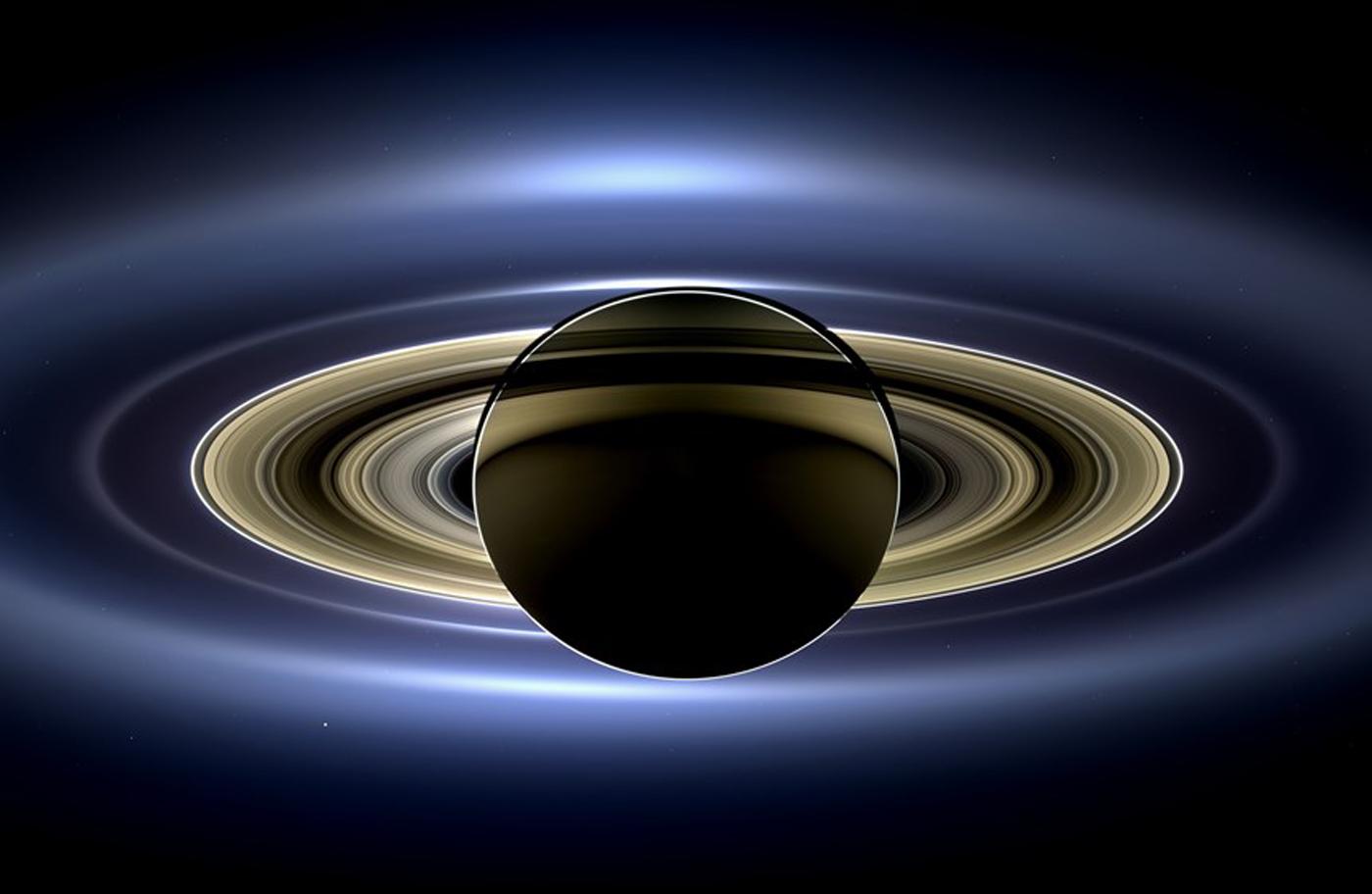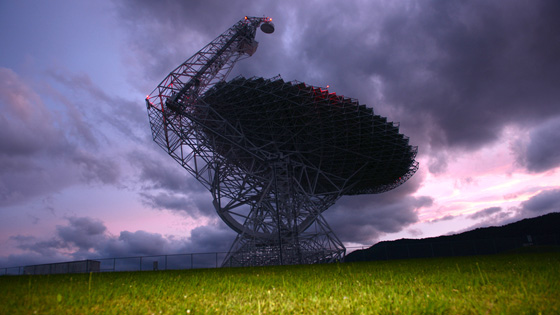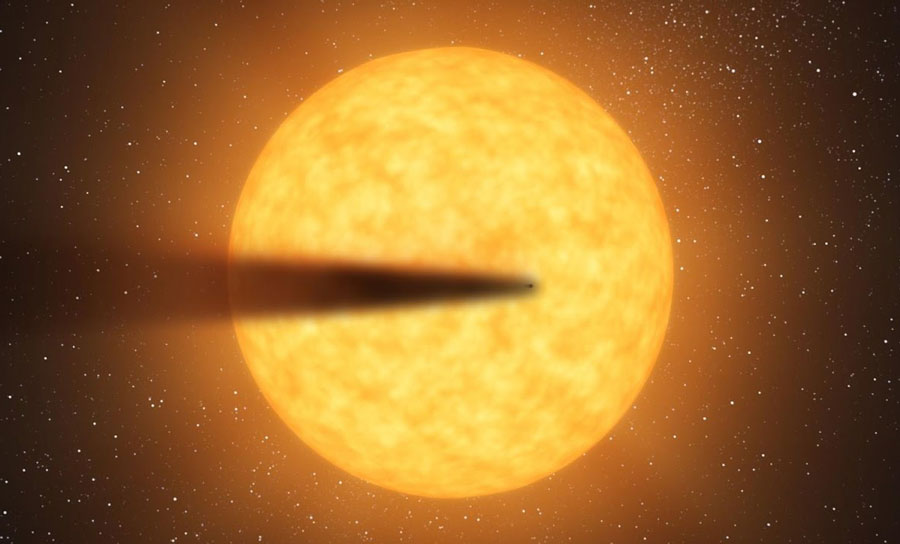
Cassini’s mission comes to a spectacular end next week. After nearly 20 years in space, Cassini’s 13 years in orbit around Saturn represent less than a half a Saturn year, equal to 29 Earth years. On September 15 Cassini will use up the last of its fuel to dive into Saturn’s atmosphere, sending data back to Earth as it goes.
Thanks to Cassini, we know that at least two of Saturn’s 60 moons, Enceladus and Titan, have the potential for life. That possibility is why the decision to allow Cassini to be destroyed in Saturn’s atmosphere was made – if the space probe were allowed to go adrift, it could have contaminated these extraterrestrial environment.
Thanks to Cassini, we have amassed a wealth of knowledge about Saturn, its rings, its moons, and its weather. For example, thanks to images taken in 2009, we know that Saturn’s rings are “arguably the flattest structure known to man,” according to SETI Institute scientist Matt Tiscareno.
Since April Cassini has been making weekly dives in the gap between Saturn and its rings, providing never-before-seen views. “When you consider that Saturn is some 75,000 miles across, and the ring system is over 170,000 miles across, we are really threading a needle here,” said Matt in an email to NBC News.
Matt has been studying the data from Cassini since 2004. He has also worked closely with an organization called System Sounds that has created music from the resonances that bounce off Saturn’s rings.
Another SETI Institute researcher, Matija Cuk, led a team that concluded that most of Saturn’s major moons are much younger than previously believed.
Earth will receive Cassini’s final message on Friday, September 15, just before 5AM PDT.
- NBC News: This Dazzling ‘Inside Out’ Movie Was Shot Inside Saturn’s Rings
- System Sounds: Saturn Sounds Part 1: Moons and Rings Translated into Music
- System Sounds: Saturn Sounds Part 2: Resonances of Janus Translated into Music
- Iran Daily: As Cassini’s Tour of Saturn Draws to a Close, a Look Back at Postcards from the Probe
- Daily Mail: Saturn's rings may be BILLIONS of years younger than thought: Cassini data suggests they formed at the same time as dinosaurs roamed Earth
 FBR 121102
FBR 121102Fast Radio Bursts (FRBs) are bright, powerful pulses of radio energy detected in space whose origins and causes are unknown. About 30 FRBs have been detected so far. Last week the Breakthrough Listen project announced the detection of 15 pulses from an object known as FBR 121102, the only burster known to have erupted repeatedly. FBR 121102 was first detected in 2012 and it has been seen to flash more than 150 times.
Although pulses from FBR 121102 are being detected here on Earth, it’s important to know that they are coming from a galaxy that is 3 billion light-years away, which means that a pulse we see today actually occurred a long time ago, before there was multicellular life on Earth.
At the SETI Institute we’ve been using the Allen Telescope Array (ATA) to get data at frequencies higher on the radio dial than previously measured for this object. We’re also planning to install new digital analysis hardware to discover FRBs over a range of frequencies that can’t be measured by other instruments.
- SETI.org: FBR 121102: Radio Calling Cards from a Distant Civilization?
- Smithsonian: Astronomers Detect 15 Mysterious Fast Radio Bursts From a Distant Galaxy
- Geek Wire: Alien-hunting Breakthrough Listen project tracks strange series of 15 radio bursts
- Pulse Headlines: Astronomers Spot 15 Fast Radio Bursts Signals Emitted 3 Billion Years Ago from Distant Dwarf Galaxy
- Open Minds: New Mysterious Signals Detected by Search for Extraterrestrial Intelligence (SETI) Project
 Tabby’s Star
Tabby’s StarTabby’s Star, aka KIC 8462852, is a little larger than the Sun and 1,300 light-years away. The reason Tabby’s Star has been in the news is that it does something that hasn't been explained – it dims periodically, although on no set schedule, sometimes by as much as 20% or more. Since there’s no pattern to its dimming, and because it dims so significantly, the phenomenon can’t be explained by a transiting planet. There are many theories, including one that suggests the dimming is caused by an alien megastructure blocking its light.
A new theory suggested by researchers at the Universidad de Antioquia in Colombia is that the dimming is caused by a ringed system that would block more of the star than a planet. There are still many questions about whether this theory could explain the dimming of Tabby’s Star and more observations will be needed to solve the mystery.
- NBC News: Has Tabby’s Star Mystery Finally Been Solved?
- SETI.org: What’s Up with Tabby’s Star?
In last week’s Facebook Live we shared our eclipse experiences, featuring Seth Shostak, Pamela Harman and Debbie Koyler.
 Big Picture Science
Big Picture ScienceLast week, encore presentation Elements Never Forget, investigated the loss of nitrogen in the atmosphere. This week, our encore Born Legacy wonders how to make stars shine.
- Amateur Astronomers Association of New York, September 8, Brooklyn, NY Franck Marchis will be in the Evergreens Cemetery for stargazing and will demonstrate the Unistellar telescope.
- Space Station Museum, September 9 San Francisco, CA Screening of the movie Contactwith commentary by Jill Tarter.
- AAA Urban Starfest: September 9, New York, NY Franck Marchis will join the Amateur Astronomer Association in Central Park for a free event and will demonstrate the Unistellar telescope.
- California Academy of Sciences Astronomy Lectures, September 11, San Francisco, CA Matt Tiscareno will talk about the end of the Cassini mission and the science of its grand finale.
- Wonderfest Science: September 14, Berkeley, CA Pascal Lee will discuss N, in the Drake Equation, the number of advanced civilizations in the galaxy.
- StarTalk Radio, September 16, Seth Shostak will guest host this Neil deGrasse Tyson radio program that explores science, pop culture and comedy. Live event in Brooklyn, NY.
- European Planetary Science Conference: September 17-22, Riga, Latvia SETI Institute Scientist Matt Tiscareno will present research on the planetary rings of Saturn and the Cassini mission.
- NightHowl, September 23, San Francisco, CA Franck Marchis will demonstrate the Unistellar telescope
- Menlo Park Library Science Night, September 28, Menlo Park, CA SETI Institute scientist Margaret Race will take part in the Menlo Park Library’s annual science night.
- Division of Planetary Sciences, October 15-20, Provo, UT SETI Institute Scientist Matt Tiscareno will present research on the planetary rings of Saturn and the Cassini mission.
- American Geophysical Union: December 11-15, New Orleans, LA SETI Institute Scientist Matt Tiscareno will present research on the planetary rings of Saturn and the Cassini mission.





